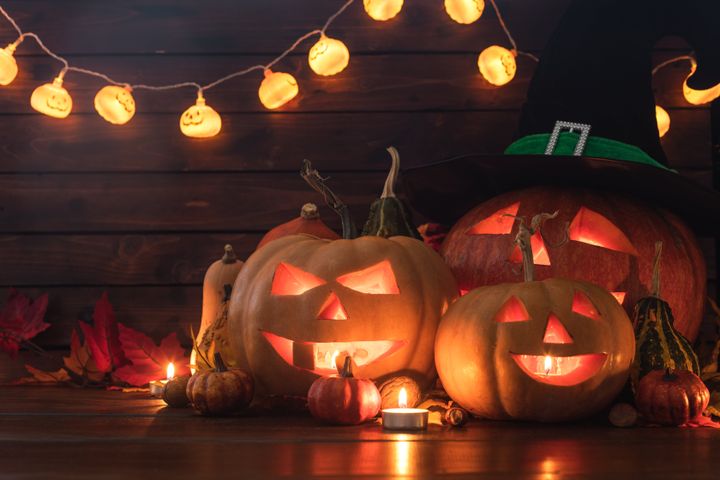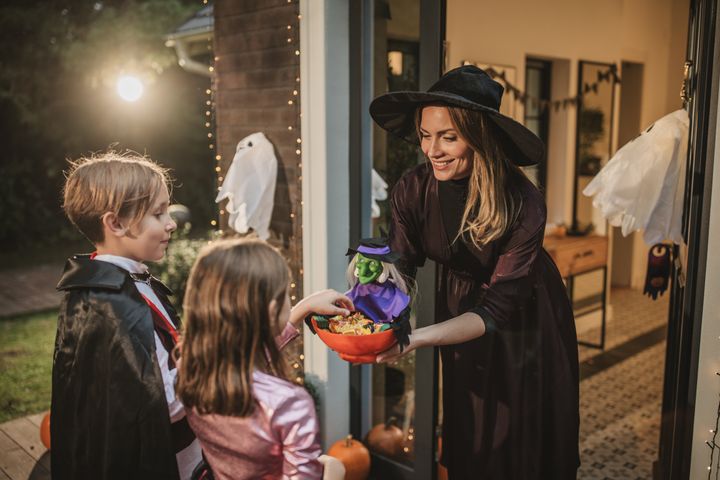
Love it or hate it, Halloween has a long rich history – and has been a significant celebration in our culture for more than a thousands years.
While its religious connotations have now faded, and the event is associated with dressing up, pumpkins, and everything eerie, the occasion is still full of references to its pagan roots.
Here’s why we celebrate October 31, and why some curious traditions (bobbing for apples, anyone?) have stood the test of time.
What does paganism have to do with Halloween?
A lot, really. The whole event comes from the ancient Celtic festival of Samhain, a religious, pagan celebration which was meant to mark the official end of summer and welcome the harvest.
Of course, if you live in the UK, by the end of October, summer feels like a lifetime ago.
But, for the pagans in the Celtic regions of Ireland, the UK and northern France, who lived around 2,000 years ago, lighting bonfires and wearing costumes to ward off ghosts was the best way to ring in the special occasion.
And because the dark, cold winter, is often linked to death, they believed the line between the world of the living and the dead blurred around this time – so the ghosts of the dead could return to the living world.
These spirits not only caused mischief and damaged crops, but they made it “easier for the Druids or Celtic priests to make predictions about the future”, according to History.com.
Pagans would burn crops and animals as sacrifices to their gods, and would wear costumes usually made out of animal heads and skins, to tell each other’s fortunes.
History.com said it was their way of ringing in the new year.
And, just to quell any misconceptions, it’s not the same as Mexico’s well-known Day of the Dead celebration, which is about the afterlife and the continuation of life – not about death and ghosts, like Halloween.
As Britannica explains: “Although often linked to Halloween, the Day of the Dead is a time when death is celebrated, not feared.”

How did Samhain become Halloween?
The Pagan event evolved over time as Celtic culture faded.
After the Roman invasion in 43 AD, two other festivals were incorporated into Samhain.
History.com claims one was called Feralia, a day in late October when Romans honoured the passing of the dead, and the second was a day when Romans, honoured the goddess of fruit and trees, Pomona.
But it really started to change when, according to the US government’s Library of Congress, Pope Gregory III decided to make November 1 the time to honour both known and unknown saints who have attained heaven, in the eighth century.
History.com claimed: “It’s widely believed today that the church was attempting to replace the Celtic festival of the dead with a related, church-sanctioned holiday.”
The online encyclopedia, Britannica, explained that All Saints Day – also called All Hallows’ Day – then started to weave in some of the Samhain traditions from the day before.
That meant Samhain started to be called All Hallows’ Eve, which is how we now know it as Halloween.
And once the occasion moved to the US and trick or treat became increasingly common at the start of the 20th Century, History.com claims parents were “encouraged by newspapers and community leaders to take anything ‘frightening or grotesque’ out of the celebrations”.
That’s probably how the event ended up losing its superstitious and religious overtones.

Why do we carve pumpkins?
This tradition actually comes from Ireland, where turnips were used instead of pumpkins.
According to the Library of Congress, the myth comes down to a man called Stingy Jack who supposedly fought with the devil, was rejected by Heaven and refused to go to Hell – so he ended up wandering the world as a ghost.
All he had was just a gift from the devil, a burning lump of coal with a turnip as a source of light – and that’s why we call carved pumpkins called Jack o’Lanterns.
Over time, it became associated with a means to banish evil spirits.
Why do we talk about ghosts so often around Halloween?
Ghosts are often associated with this time of year, because the pagans believed spirits walked the Earth during the festival – a belief reinforced by Christian missionaries who introduced All Souls’ Day.
That’s why we wear scary costumes to repel the spirits.
What about bats?
As bonfires were said to light the way for souls looking into the afterlife – and keep away the evil spirits – the light would attract insects, and therefore draw in bats, which is how spotting bats became part of the festival.
Where did trick or treat come from?
There are several different theories floating around.
One potential explanation is that Celtic people would leave food to appear the spirits travelling the Earth at night – and then people started to try and get in on the trend themselves.
Another suggests people may have been collecting food and money from local homes in return for prayers for the dead on All Souls Day, and it then evolved into trick or treat.
The US Library of Congress said it may have come from the German-American Christmas tradition of “belsnickeling” where children call on their neighbours to see if they can guess who they are. They were rewarded with food or other treats if no one could identify them.
Britannica also pointed out that this custom became popular in the early 20th century as Irish and Scottish communities revived the Old World tradition of “guising”. Someone would dress up, tell a joke, or perform, in exchange for fruit or a treat.
Why do we go bobbing for apples?
It was allegedly a courting ritual that was part of a Roman festival honouring Pomona, who was the goddess of agriculture and abundance.
Essentially, those who played would predict their future relationships based on their performance in the game.